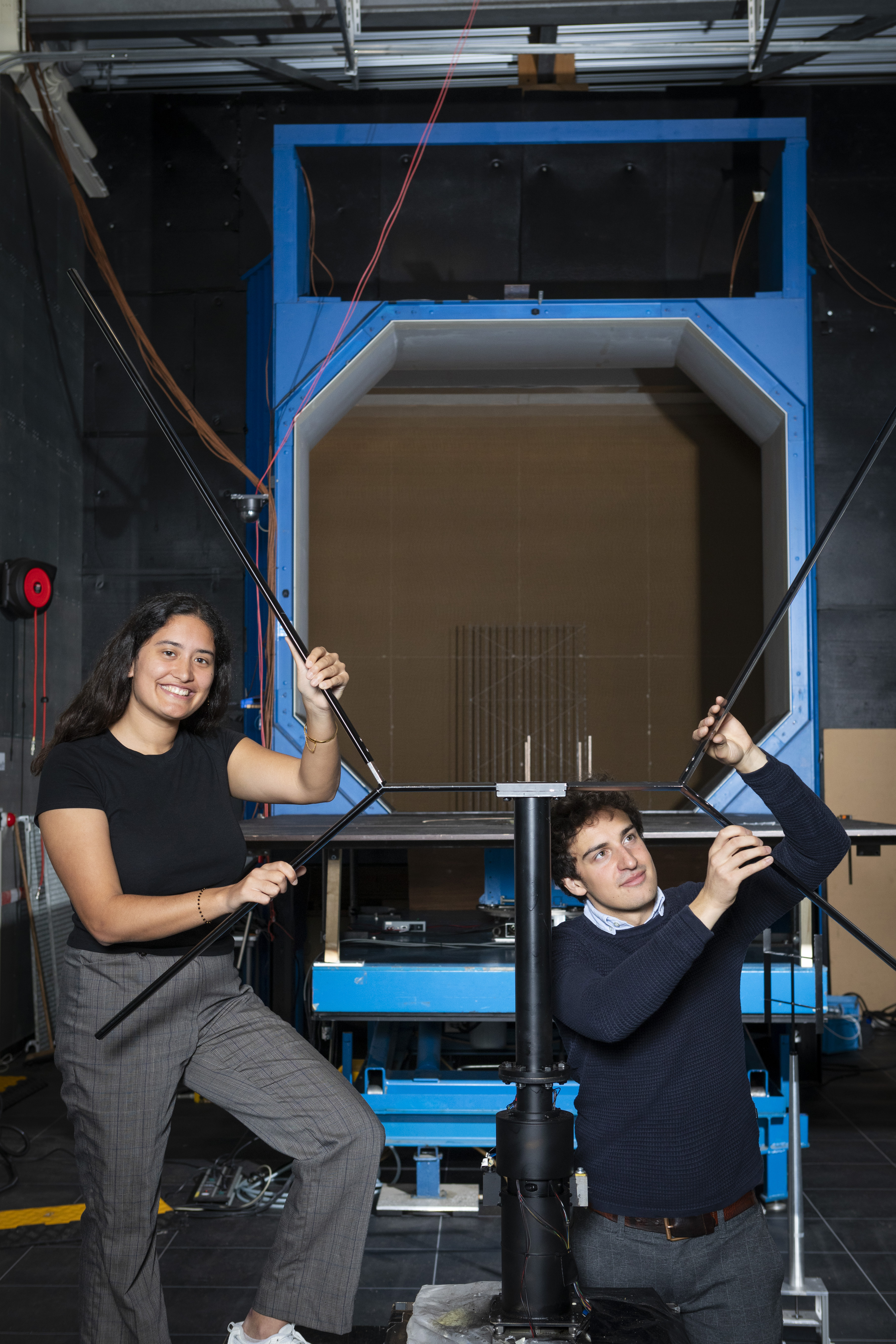Research
Research in the Aerodynamics group
The Aerodynamics group is engaged in both fundamental and applied research related to the understanding and control of aerodynamic flows.
The group’s strengths lie in the development of new experimental and computational techniques and the investigation of complex flow phenomena.
Concerning experimental techniques, the aerodynamics group is at the forefront of the development of particle image velocimetry (PIV) including its application to both unsteady and high-speed flows.
This includes the development of methods to derive forces from PIV data, and which optimally combine experimental results with numerical flow simulations. The group is also very active in the development of new methods for numerical flow simulation. This includes methods which exactly preserve flow kinetic energy and helicity, optimal methods for the large-eddy simulation of turbulent flows and efficient techniques for fluid-structure simulations. In addition, methods for propagating input uncertainty are being advanced, along with Bayesian techniques for turbulence model selection and calibration. Finally, the aerodynamics group is engaged in the characterisation of several complex fluid phenomena for application to flow control. Examples include the effect of micro-ramps on shock-boundary layer interactions, sound production induced by trailing-edge turbulence interactions and the effects of low-frequency and nano-pulse plasma actuators on boundary-layer transition.
MSc projects can be carried out in all these disciplines both in the Aerodynamics Lab as well as in collaboration with industry.

Research in the Wind Energy group
Rotor Aerodynamics
The group has a unique wind tunnel to test model rotors: the Open Jet Facility (OJF). We make extensive use of advanced experimental techniques such as laser sheet stereo PIV and CTA hot wire anemometry.
Wind Turbine Design
In the design of wind turbines all disciplines come together. Since offshore wind power is the most demanding application, the development of design methodologies is focusing on offshore wind power stations.
Wind Conditions
In order to calculate wind turbine loads you need to know the properties of wind shear and turbulence as well as the extreme wind conditions.
Floating Wind Energy
We are specifically looking into understanding the effect of complex fluid-structure interactions on the design, dynamics, and performance of the system.
Kite Power
The design of a kite power system is highly connected to its dynamic behaviour. Other research areas are automated control and numerical modelling of inflatable tethered wings.
Aeroacoustics
Aeroacoustics is a branch of fluid dynamics dealing with the theory of noise generation in unsteady flows and its reproduction using laboratory experiments and/or numerical simulations.
The Wind Energy research group collaborates with, among others, TNO, Vestas, Siemens Gamesa, Eneco and NREL.
See also: department research page
